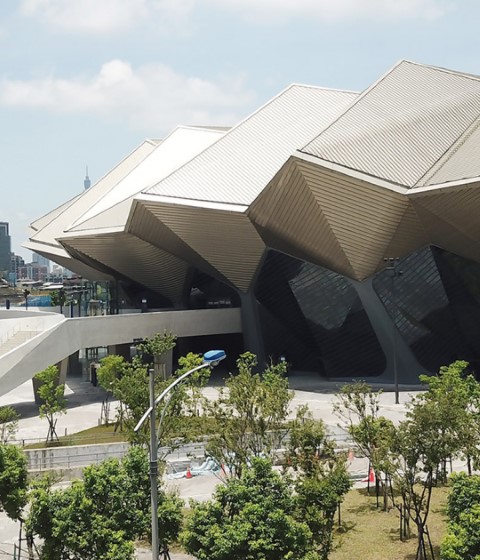Due to the need to create versatile spaces to host the wide cultural and leisure program offered by a theater-auditorium, the building is organized around the main hall and its circulations and entrances, on different levels. Inside, they create gaps, spaces, and light entrances that unite the four exterior volumes, differentiating the access and circulation spaces - open, visually, and spatially connected - from the closed space of the main room.
Description of project by Magén Arquitectos
Located to the west of the province of Zaragoza, the town of Illueca is the regional head of Aranda, one of the least populated areas of Aragon. As a measure to generate leisure alternatives and avoid depopulation, the city council convened an ideas competition for a new scenic space, on the site occupied by the old cinema. The building completes the construction of the block, located on the eastern edge of the historic center, with a dividing wall on the north side with a residential building. The perimeter basement walls, built-in previous work, were executed on the plot.
Integrating the volume required by the new auditorium into the fabric of the historic center of a rural municipality has been the fundamental objective of the project. Attentive to the small scale of the context, the volumetry of the auditorium is broken down into four fragments, with gabled roofs and different heights and orientations, corresponding to the stage box, the stalls, the lobby, and the service area. This operation reduces the scale of the new equipment and creates a set of staggered volumes, which establish references with the forms of domestic constructions and their varied juxtaposition in the conformation of the historical residential plot, on the irregular relief of the place. The intervention completes the profile of the old town, without altering it.
The materialization of the project using red klinker brick walls - topped by copper roofs - evokes the old pottery tradition of the area and integrates the building with the reddish tones of the surrounding buildings, the color of rodeno stone, from the quarries of the place, and also present in the stepped plinth of the auditorium. This stone plinth resolves the meeting of the building with the irregular topography of the plot, with more than 2.50 m. unevenness between the different accesses. The construction of the project explores the expressive possibilities of brick, in various formats and details: lattices, rigging, lintels, acoustic pieces, ...
The main public entrance is located in the southeast corner of the plot, under a cantilevered porch-lattice, which leads to the main hall. The building also has other entrances that allow both the restricted passage of personnel and actors, as well as direct entry to the rehearsal rooms, located on the lower level. The stage has access from the outside to both sides, for loading and unloading.
Conceived as a stage space, the functional aspects of the auditorium required great versatility, to offer a wide cultural and leisure program, including film screenings, musical activities, and all kinds of scenic uses. The building is organized around the main hall and its circulations and entrances, on different levels. The room, with a capacity for 224 spectators, is developed in a continuous bleacher, in which they differ: gently sloping stalls, an inclined plane that connects the lobby level with that of the first floor, and side boxes in this upper level. The stage has large dimensions and has access from the ground floor and the basement, which houses service spaces related to the main room (warehouses, dressing rooms, facilities,…) and rehearsal and musical training rooms. On the upper levels of the stage box, the management office and technical floors are located, with walkways at different levels, for access to lights, stage lines, and stage machinery.
In the interiors, various voids, gaps, and light entrances articulate the relationship between the four exterior volumes, differentiating the access and circulation spaces - open, visually, and spatially connected - from the closed space typical of the main room. In the former, the light filtered through ceramic lattices, windows, and skylights, creates a characteristic interior atmosphere, but at the same time changing throughout the day. In the interior tours, the various wooden carpentries offer framed views of fragments of the historic center. At night, the light that comes from the building, especially from the access porch-latticework and from the lobby, announces its activity as stage equipment.











































